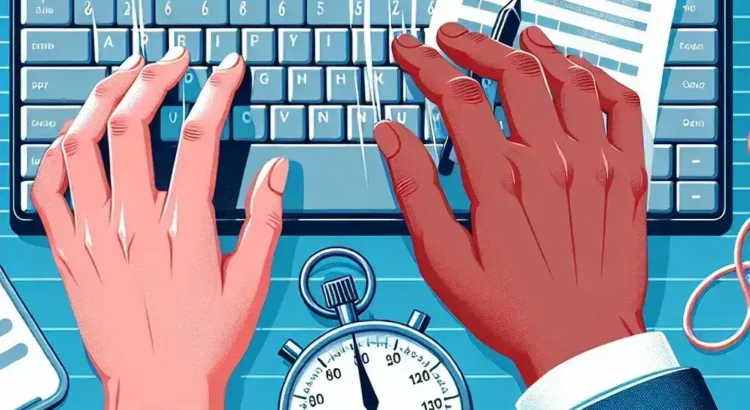In the digital age, typing efficiently is an essential skill. Whether you\’re a student, a professional, or simply someone who spends a significant amount of time on a computer, improving your typing speed and accuracy can save you time and increase your productivity. Here\’s a detailed guide to help you master the art of typing.
| Aspect | Tips |
|---|---|
| Regular Practice | Commit to daily practice sessions to steadily improve your skills. |
| Proper Hand Placement | Ensure your fingers are on the home row keys for maximum efficiency. |
| Use Typing Software | Take advantage of typing software and online resources to track your progress. |
1. Understand the Keyboard Layout
Before you start improving your typing speed, it\’s vital to be familiar with your keyboard layout. Most keyboards follow the QWERTY layout, and knowing the placement of keys can significantly improve your efficiency. Spend time understanding where each key is, and practice without looking at your hands.
2. Practice Regularly
Consistent practice is critical for improvement. Set aside time each day to practice typing. You can use various online platforms that offer typing tests and exercises. Aim for short, focused practice sessions of 15-20 minutes to avoid fatigue and maintain high concentration levels.
3. Maintain Proper Hand Placement
Proper hand placement is crucial for efficient typing. Your fingers should naturally rest on the home row keys: A, S, D, F for the left hand and J, K, L, ; for the right hand. When typing, always return your fingers to these keys. This technique minimizes movement and maximizes speed and precision.
4. Utilize Typing Software
There\’s a wide range of typing software available that can help you improve your speed and accuracy. Programs like TypingClub, Keybr, and Typing.com offer structured lessons and progress tracking. These tools provide immediate feedback, allowing you to identify and work on your weak areas.
5. Focus on Accuracy First
While speed is important, focusing on accuracy should be your priority. Typing quickly but inaccurately can lead to more errors and wasted time correcting mistakes. Start by typing slowly and concentrate on hitting the correct keys. Gradually, as your accuracy improves, your speed will naturally increase.
6. Ergonomic Workspace
An ergonomic workspace can prevent fatigue and boost your typing efficiency. Ensure your keyboard is at a comfortable height, and your chair supports good posture. Keep your screen at eye level to reduce neck strain. An ergonomic setup reduces the risk of repetitive strain injuries, which can hamper your typing practice.
7. Take Breaks
Regular breaks are essential, especially during long typing sessions. Continuous typing can lead to strain and reduced accuracy. Follow the 20-20-20 rule: every 20 minutes, take a 20-second break and look at something 20 feet away. This helps relax your eyes and hands.
8. Use All Fingers
A common mistake is using only a few fingers to type. Practice using all your fingers in the correct positions. This distributes the workload evenly across your hands, increases typing speed, and reduces the chance of repetitive strain injuries.
9. Monitor Your Progress
Regularly monitor your typing progress. Use typing tests to measure both speed and accuracy. Tracking your progress keeps you motivated and helps identify areas that need improvement. Celebrate milestones to stay encouraged.
10. Stay Patient
Improving typing speed and accuracy takes time and patience. Don\’t get discouraged by initial slow progress. Keep practicing consistently, and you will see improvement over time. Patience and persistence are key to becoming a proficient typist.
In conclusion, building your typing speed and accuracy is a gradual process that requires dedication and the right techniques. By following these tips and regularly practicing, you can enhance your typing efficiency, which will be beneficial in both professional and personal aspects of your life.
